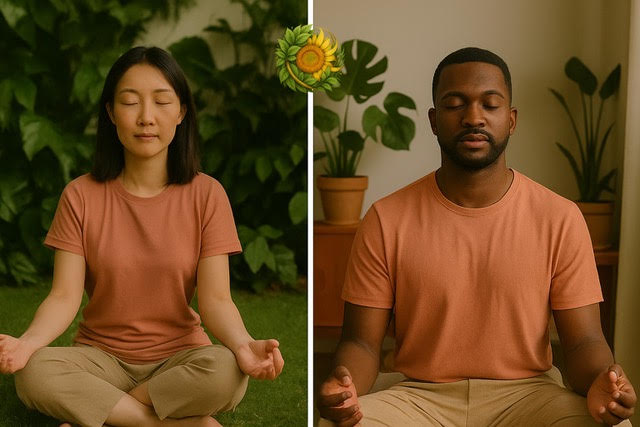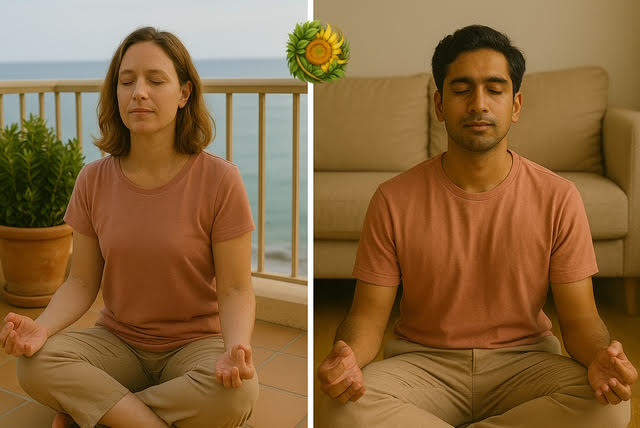In the fast-paced rhythm of modern life, self-care is not a luxury—it’s a necessity. One of the
most effective yet often overlooked ways to restore calm and clarity is through intentional
breathing techniques. Just as urban gardening and indoor plant care bring tranquility to a space,
mindful breathing can cultivate peace within the body. This article explores five powerful
breathing-based self-care practices that integrate effortlessly into your daily routine, offering
both relaxation and a deeper connection to the present moment.
1. Box Breathing: A Structured Path to Calm
Box breathing, also known as square breathing, is a simple yet profoundly effective technique
used by athletes, CEOs, and even Navy SEALs to control anxiety and sharpen focus. This
method involves inhaling, holding, exhaling, and holding again—each for a count of four.
How to Practice Box Breathing
● Inhale deeply through your nose for a count of 4.
● Hold your breath for a count of 4.
● Exhale slowly through your mouth for a count of 4.
● Hold your breath again for a count of 4.
● Repeat the cycle 4–5 times.
This technique can be practiced while tending to your indoor plants, creating a dual moment of
mindfulness that nourishes both body and environment. The rhythmic nature of box breathing
mirrors the natural growth cycles in urban gardens, grounding us in routine and stillness.
2. Diaphragmatic Breathing: Nourishing the Nervous
System
Also known as belly breathing, this method engages the diaphragm, promoting oxygen-rich air
intake and stimulating the parasympathetic nervous system—our body’s rest-and-digest
mechanism. This type of breathing is particularly beneficial for those feeling overwhelmed or
constantly fatigued. We all begin life breathing this way – it is the natural way a baby breathes.
How to Practice Diaphragmatic Breathing
● Sit or lie down comfortably.
● Place one hand on your chest and the other on your belly.
● Inhale slowly through your nose, focusing on expanding your belly (not your chest).
● Exhale through pursed lips, feeling your belly fall.
● Practice for 5–10 minutes daily.
Pairing this technique with activities like watering succulent arrangements or repotting your
indoor herb garden can amplify its grounding effects. It brings awareness to both body and
surroundings, a symbiosis similar to the one we foster with our plants.
3. 4-7-8 Breathing: Sleep and Stress Relief
The 4-7-8 technique, popularized by Dr. Andrew Weil, is a soothing method rooted in
pranayama, the ancient yogic art of breath control. It is especially effective before bedtime or
during stressful episodes, helping the mind transition to a state of peace.
How to Practice 4-7-8 Breathing
● Inhale quietly through the nose for 4 seconds.
● Hold the breath for 7 seconds.
● Exhale forcefully through the mouth for 8 seconds.
● Repeat the cycle 4 times.
This technique can be practiced during evening plant care rituals, like misting your humidity-
loving ferns or tidying your windowsill vegetable gardens. The slow, deliberate pace of both
breathing and plant care naturally prepares your system for rest.
4. Alternate Nostril Breathing: Balancing Mind and Mood
Nadi Shodhana, or alternate nostril breathing, is a yogic breathing practice designed to
harmonize the left and right hemispheres of the brain. It is very helpful during times of emotional
imbalance or mental fog.
How to Practice Alternate Nostril Breathing
● Sit in a comfortable position.
● Use your right thumb to close your right nostril.
● Inhale through your left nostril slowly.
● Close your left nostril with your ring finger, release the right nostril.
● Exhale through the right nostril.
● Inhale through the right nostril, then switch again to exhale through the left.
● Continue for 5–10 rounds.
Practicing this while seated in your urban balcony garden surrounded by green textures and
gentle natural light can deepen its meditative effects. Like the interplay of light and shade in a
thriving indoor plant arrangement, this breathwork balances energy and mood.
5. Ocean Breath (Ujjayi): The Breath of Stillness and
Strength
Ocean breath, or Ujjayi, is often used during yoga sessions to build inner heat and focus. This
breath creates a soft hissing or ocean-like sound, enhancing mindfulness and body awareness.
It is ideal for morning routines or as a midday reset.
How to Practice Ujjayi Breathing
● Inhale deeply through the nose while slightly constricting the back of the throat.
● Exhale through the nose while maintaining the same throat constriction.
● The breath should sound like ocean waves or a gentle breeze.
● Continue for 5 minutes.
You can integrate Ujjayi breath while pruning your indoor vines or checking soil moisture levels
in your potted greens. The ambient plant care environment magnifies the rhythmic pulse of this
breath, blending mindfulness and movement.
Creating a Breathing Space: Your Indoor Garden
Sanctuary
To fully reap the benefits of these breathing techniques, consider creating a dedicated breathing
corner in your home. Fill it with calming elements: air-purifying plants like snake plants and
peace lilies, natural textures like bamboo or rattan, and soft lighting from a nearby window or
warm-toned lamp. This setting invites a sense of serenity, helping your mind associate the
space with restorative self-care.
Tending to plants has been scientifically proven to reduce stress levels, improve mood, and
enhance air quality (Lee & Kim, 2021). When paired with mindful breathing, it becomes a
powerful tool in the modern wellness arsenal.
Conclusion: Root Yourself in Calm with Every Breath
Incorporating these breathing techniques into your daily self-care routine offers a profound and
accessible way to manage stress. Much like nurturing a delicate urban garden, cultivating your
breath creates internal balance and calm. By aligning breath with intentionality and plant care,
we root ourselves in routines that nourish both our environments and our emotional well-being.
Whether you’re unwinding after a long day, preparing for a restful sleep, or grounding yourself
during a busy afternoon, your breath is your most immediate and potent tool. Use it, honor it,
and let it become your daily act of quiet resistance against stress.


